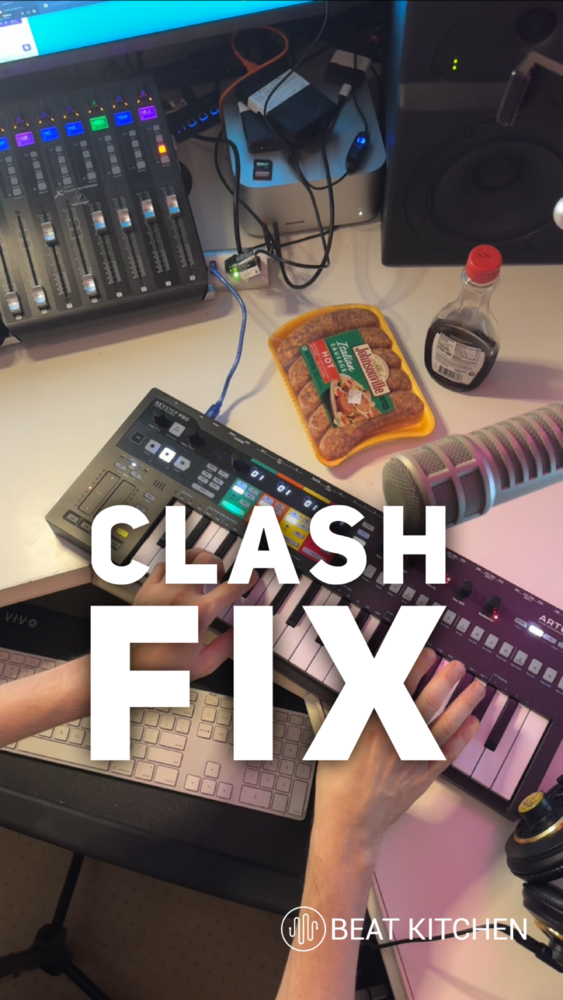Some people don’t like getting syrup on their bacon. For others, it’s the spice of life. What do we mean when we say a chord is clashing?
Now before I draw the ire of the internet, I want to be clear. Only you get to decide what’s right and wrong, at least when it comes to music. But a clashing note tends to destabilize a chord, and it often comes about in one of a couple ways.
If the guitar player plays a flat 9 and the piano player plays a natural 9, on some level, they’re not in agreement. But within your own productions, you may find that a melody note lands somewhere outside of the structure of a chord. In some cases, these become color tones.
But you may find that a major third can be a finicky bedfellow, as in this example in the key of F minor, where the F might not get along with the E in the C7 chord. You ostensibly have four options. First, you can choose to do nothing.
If you’re okay with it, I’m okay with it. You can deflect by getting off the chord so the two just don’t play together. You can change the melody so it sits within the chord, or you can change the chord.
And all you may need to do is remove the offending note and no one will be the wiser. And you can share that with someone who belongs in a Beat Kitchen class.

